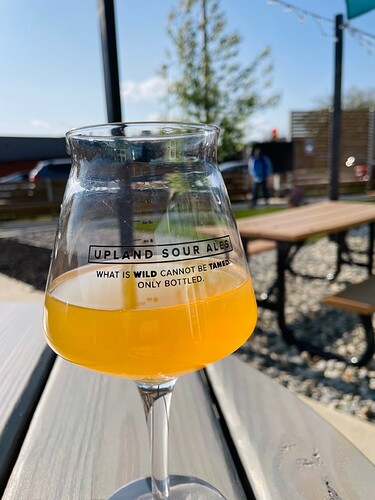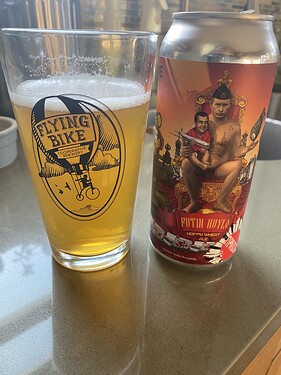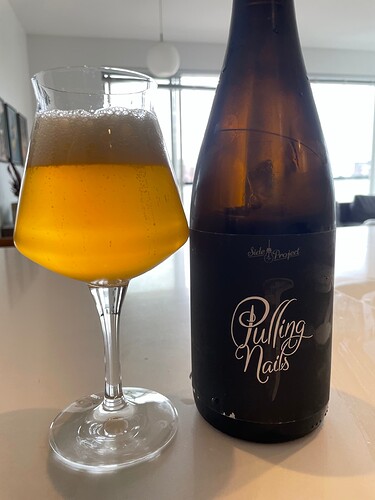Upland Oak and White. Love the sour program here.
I miss going to their Bloomington location
I actually haven’t been to that one. They opened up an awesome new place in Indy a couple years ago.
Sierra Nevada Pale Ale is just the most consistent great beer that’s everywhere. I love it.
Don’t we have a resident Tequila expert here? I’m headed up to this Airbnb with a few other couples in May and want to pick up a bottle for the pool. Budget $150. I usually just get Milagro or Espolon.
Don Julio 1942 is the one everybody over pays for the bottle right?
Liquor store was OUT OF TANQ
picked up beefeater 24, it’s not bad, a little fruitier, brighter, very summery
Negronis?
Obv
Will probably try a martini as well
Feels like it will be great in a simple G&T too
Not a huge fan of 24 in a martini (dry, 6:1 gin:vermouth ratio). Drinkable for sure but not the right use for this.
We have a couple of friends coming over Friday, you’ve inspired me to make Negronis. But we are starting from scratch, I don’t have any of the three ingredients for Negronis.
Questions:
- Is it really as simple as 1:1:1 ratios of gin:vermouth:Campari?
- What advice on brands do you have, we have none at the moment. We’ll grab whatever is available at the liquor store.
yes, I do 30/30/30 ml, twist of lemon or orange. You can do an orange wheel but it seems comical to me
Vermouth is the biggest variable IMO. A bad one will make your cocktail undrinkable. There was a discussion upthread about vermouth in negronis, basically don’t use bottom shelf stuff like Martini and you’ll probably be OK. Dolin is easily available and is fine in my book for dilettantes if you don’t want to spend to much. Like everything else, the returns diminish extremely quickly above this point IMO.
for gin I basically use tanqueray for everything. The 24 has been a nice change but I don’t think it’s decidedly better, just different. Tanqueray seems to work pretty well in everything so I generally just stick with it.
some people will use aperol or other apertifs but I just stick with the original Campari, it’s never let me down.
The only thing I’d add to this post is that if you want to go one step above Dolin, I recommend Cocchi Vermouth di Torino. It’s a bit more expensive (like $5 more) but less sweet and more complex. A little harder to find than Dolin, though.
I made a post ITT comparing vermouths if you’d like to look at my semi-drunk notes.
Thanks. I think for starters I will get the Dolin. Both are available at my neighborhood liquor store but the price differential is huge - in Canadian dollars, Dolin is $15 for 750 mL and Cocchi is $60 for 500 mL.
I don’t have much in the way to recommend, but “dark fruit” is a common descriptor of red wines, so you’re hardly off base there, and “felt soft” probably means that it was low in tannins. Tannins are highly desirable in wine that is meant for aging, because they act as a preservative. A wine with a high amount will taste very dry, but that will fade with age. A wine with a low amount will usually taste better right away, but it may be more likely to spoil with age. Should you encounter a highly tannic wine that’s a bit offputting but you don’t want to sound boorish about it, you can always describe it as “a little young,” and you’ll instead sound sophisticated.
If you like dark fruit and lower tannins, I’d kick the tires on some (red) Zinfandels, as they tend to have those characteristics more commonly. Dry Creek Valley and Lodi are two appellations that tend to produce very good ones.
Different vintages can have different flavor profiles but it won’t be noticable unless you’re an afficionado or doing a taste test.
Mack is awesome if you’re getting into wine. He explains how to appreciate wine no matter its price or vintage
If you want similar tasting wines, going with the same grape varietal will get you there. Bonus is you’ll start to understand the subtle differences that you can apply to other wine later
Nah, most retailers will sell wine as it is released. A 2019 wine you are buying today probably went through fermentation, a year or two in the barrel, and then the rest of the time in the bottle. Some very good wine might have spent another year in the barrel. But some of the very best wines people will want to age for a decade or more after release, and most retailers won’t want to bother storing it that long. There is seldom an indication on the bottle as to whether a wine should be aged and for how long. One notable exception is Champagne. Most Champagnes will be so-called non-vintage, meaning that they are a blend of different vintages so as to achieve a consistent product, and there won’t be a year on the label. Champagnes with a vintage label are from a single vintage that everyone thinks was especially good. They are usually much more expensive and can be aged, while NVs can just be enjoyed now.
Anyway, I would not worry about proper aging at this point. As you try more and better wine, you may develop a taste for things you think are both really good and a little too tannic. Those are decent candidates to sit on for a while. A couple things to keep an eye out for are vertical and library tastings. These are more common at wineries than at stores, but sometimes you might get lucky. Vertical tastings involve tasting the same wine from different vintages, which can give you a sense for how a wine ages and how it varies over the years (but obviously, it is impossible to deconvolute those two variables). Library tastings will usually just be well aged good wines where the wineries will sell some of their old stock too.
I guess if you wanted to think about some wines that need or at least are likely to benefit from aging, it would be big reds from elite appellations. Three that come to mind immediately are Chateauneuf-du-pape, Brunello di Montalcino, and almost any red wine from Napa Valley that is labeled as being from a sub-AVA, like Oak Knoll, Rutherford, or Calistoga. Those are places where, if you aren’t producing elite wine that ages well, you are better off selling your land to someone who can. There is almost no wine coming out of those appellations that is not both fantastic and better with 5-10 (or more) years of aging as judged by many wine lovers. Obviously there are others, but those are some I love.



